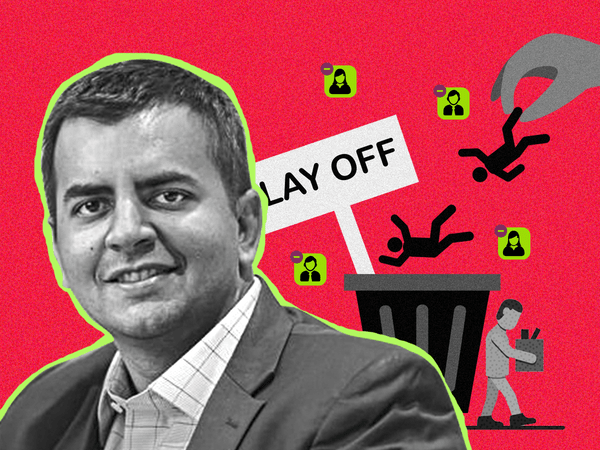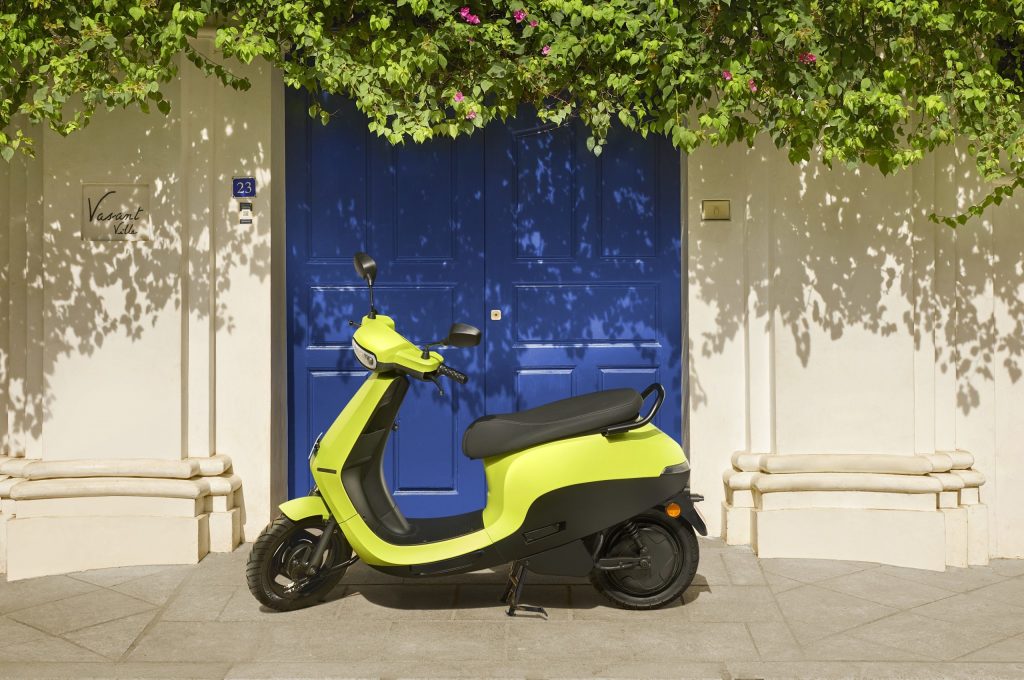IPO Bound Ola Electric To Cut 400-500 Roles Aiming Streamlining Profits; Analysts Concur, It Will Be A Bumpy Ride Ahead For Ola Electric Citing Heafty Valuation

Ola Electric’s Bhavish Aggarwal is a man with a mission, as news of entering the IPO way gain momentum, and has caused significant buzz in the market, for those who are employed with the company may not have much to cheer about as the company is looking to slash jobs, in a bid to control operating costs and hence would be axing 400-500 employees.
However, the exact numbers are still being calculated as the leadership team works its number game at the Bengaluru-based company; these cuts are expected to be across verticles.
So what is the plan here?
Well, simply to employ a newer lot at lower costs to the company, as per sources, the overall headcount of the two-wheeler maker will also reduce, as Aggarwal has been consistently ‘pushing’ to reduce costs across all avenues.
However, a spokesperson for Ola Electric has stated, “We do not know the layoff numbers your sources are speculating,” without making any specific comments on the impending job cuts.
As of October 2023, the company is said to have 3,733 employees, with an attrition rate of 47.48%, as indicated when it filed its draft IPO papers in December.
While SEBI has not given the signal yet, as the IPO application is pending with the market regulator, the company intends to raise Rs 5,500 crore via the sale of new shares.
In April, Ola Cabs, the ride-hailing business of the Ola group, laid off around 200 employees. Ola Cabs chief executive Hemant Bakshi and chief financial officer Kartik Gupta also left the firm in the space of two weeks.
Incidentally, after the top exits, Aggarwal is steering the ride-hailing business, too, working closely with the ‘CXO team’ that includes his brother Ankush Aggarwal, who was earlier chief business officer at Ola Electric but has now moved to Ola Cabs.
“The focus across the group is to get to profitability as both units – cabs and electric vehicles – are in various stages of going public,” one of the people cited above said. “That’s the mandate from Bhavish Aggarwal,” the person said.
While Ola Electric had posted a net loss of Rs 1,472 crore in FY23 on operating revenue of Rs 2,631 crore, for the first quarter of FY24, it reported a net loss of Rs 267 crore on operating revenue of Rs 1,243 crore.
On the other hand, ANI Technologies – which runs the ride-hailing business – reported a loss of Rs 1,082 crore in FY23, just over one-third compared with the previous year. Revenue grew 58% to Rs 2,135 crore in FY23.
In April, Ola Cabs exited from all of its international markets — the UK, Australia and New Zealand.
 The Renewed Interest In Domestic Market
The Renewed Interest In Domestic Market
The company is cutting its roles to maintain its leadership in the country’s growing and competitive electric scooter market.
According to the latest numbers, in May, the firm sold over 37,000 scooters, cornering a 50% market share. Last month, overall non-commercial electric two-wheeler sales grew 17% to over 74,000 units.
However, in April, overall sales fell nearly 50% from the previous month. Ola Electric sold 33,000 units in April, as a seasonal slump was exacerbated by a shift in industry subsidies.
Although it maintained its leadership, it retreated from its all-time high of over 50,000 units sold in March, when discounts and other marketing activities helped boost sales.
Increasing Competition
The electric scooter market is seeing increased competition, with legacy players like TVS Motors and Bajaj Auto expanding their market shares to 19% and 12%, respectively, in FY24.
Meanwhile, Bengaluru-based Ather Energy is set to launch its family scooter, Rizta, which will compete directly with the mainstays Ola Electric, TVS, and Bajaj.
Ather is also finalising plans to raise $75-90 million (about Rs 750 crore) in primary funding from new and existing investors as it ramps up production.
Last week, regulatory filings showed it had raised Rs 286 crore ($34 million) from its founders—Tarun Mehta and Swapnil Jain—and Stride Ventures through a mix of debt and equity funding.
After the end of the Faster Adoption and Manufacturing of Electric Vehicles (FAME) 2 subsidies in March, the industry has had to accept a much smaller Rs 500-crore Electric Mobility Promotion Scheme (EMPS).
On May 29, it was reported that the FAME 3 subsidy, with an outlay of about Rs 10,000 crore, will likely be rolled out within the first 100 days of the new government taking charge next month.

As the founder and CEO Bhavish Aggarwal asserts more focus on Ola Electric, set for its IPO debut— the first initial public offering (IPO) by an Indian pure-play electric vehicle (EV) company, and the first auto stock debut in two decades— with plans to raise a staggering $1 Bn through its upcoming pre-IPO placements and IPO in 2024.
However, is the road as smooth as the plans predict?
Ola Electric had posted a net loss of Rs 1,472 crore in FY23 on operating revenue of Rs 2,631 crore. For the first quarter of FY24, it reported a net loss of Rs 267 crore on operating revenue of Rs 1,243 crore.
Apart from the losses, the Bengaluru-based Twoweeler company also faces many questions about its overdependence on government subsidies, rich valuation, and uncertainty around future product launches, including its ambitious foray into car manufacturing.
Hence, will the public market buy into Ola’s dreams (considering many have sputtered, inflicting much pain), or will they take a pass?
Who better to answer the question than Analysts?
According to most, the ride is not as smooth as envisaged but may be bumpy for Ola Electric, so helmets and seat belts should be considered!
 The IPO Dreams, Ola Electric
The IPO Dreams, Ola Electric
The one good thing is that India’s EV market is definitely expanding and has the potential for further growth, investments, transformation, and innovation within the sector.
Hence, the company has the opportunity to set the pace in the EV game.
According to one analyst – “By going public and attracting significant funding, the company has the opportunity to accelerate its expansion, product development, and market penetration, while also setting benchmarks, standards, and expectations for industry stakeholders, competitors, and market participants.”
Ola Electric plans to raise funds through its upcoming IPO by issuing fresh shares valued at INR 5,500 Cr. Additionally, it will offer up to 95 Mn existing equity shares for sale (OFS). The company aims to generate an additional INR 1,100 Cr through pre-IPO placement offers.
According to reports, the targeted amount from the OFS is INR 1,750 Cr, bringing the total IPO size to INR 7,250 Cr. When considering the pre-IPO placement offers of INR 1,100 Cr, the overall amount reaches INR 8,350 Cr, equivalent to $1 Bn.
Out of the total outstanding shares before IPO are 1.95 Bn + 1.73 Bn (CCCS Conversion) i.e. 3.68 Bn. Out of this, 95 Mn equity shares will be offered for sale.
Founder and promoter Aggarwal will divest up to 47 Mn shares, half of the entire OFS, but this still represents a modest 3.4% of his full holdings.
Other investors diluting their shares will see even smaller percentages, ranging from 2.3% to 2.94%.

- R&D and technology platform with in-house design and development
across EV technologies and components - Adaptable manufacturing and supply chain platform
- D2C omnichannel distribution platform
Further, in order to maintain its dominant position and further penetrate the market, Ola Electric has outlined ambitious plans-
- Constructing the largest’ future factory’ with an annual production capacity of 1 Mn cars and 10 Mn two-wheelers
- Establishing the largest battery cell manufacturing facility with a capacity of 100 Gigawatt hours (GWh)
- An R&D Innovation Centre in Bengaluru
- Teasing scooters, motorcycles, and cars with impressive on-paper specifications — a range of 500 Km per charge, the ability to charge up to 80% in 1 hour, or acceleration from 0-100 Kmph in 5 seconds
- Expanding its network of retail experience centres across the country, aiming to reach 1,000 by August 2023
Therefore, these key parameters would put Ola Electric far ahead of any other Indian automobile or EV OEM. Hence, the company claims to have an edge over others despite being a late entrant in the game.
However, as most of these plans are still largely on paper, the question is what price band Ola will take for its public issue. This will be critical in attracting high subscriptions from retail investors.
Ola Electric was valued at $5.4 billion in October 2023 when it raised $385 million in debt and equities from SBI and Temasek. The company has raised over $1.5 billion from a slew of marquee investors so far.
On the valuation side, though, analysts differ from investors.
While three analysts estimated the value to hit $7 Bn—$7.5 Bn after the IPO, two of the analysts suggested it would be around $6 Bn—$7 Bn. The scenario will become clearer once the company goes for pre-IPO placements.
Most analysts predicted that if launched on time, the Ola Electric IPO would be favourably subscribed. The IPO is expected to see a valuation of around $6 Bn—$7 Bn.
Given the favourable market conditions for IPOs in 2024, fundraising at such valuations seems feasible, and it is expected that the company’s bankers will price the IPO at around INR 130-INR 150 to attract large subscription bids.
However, the all-important question is, is this price right?
Irrespective of all the positives (the ambitious plan as outlined, the cost-cutting, and a renewed focus on the domestic market), many analysts contend that even at $7 Bn, Ola would still be overvalued!



